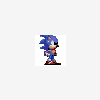-
Content count
1708 -
Joined
-
Last visited
Community Reputation
181 ExcellentAbout IO_Rack
-
Rank
Automation Specialist
Contact Methods
- Website URL http://
- ICQ 0
Profile Information
- Gender Male
- Location Upper Chesapeake Bay
- Country United States
Recent Profile Visitors
-
Craig McCanada liked a post in a topic: Omron NA5-NX1P2 - Password page
-
photovoltaic liked a post in a topic: Omron NA5-NX1P2 - Password page
-
pturmel liked a post in a topic: Omron NA5-NX1P2 - Password page
-
IO_Rack started following Omron NA5-NX1P2 - Password page
-

Omron NA5-NX1P2 - Password page
IO_Rack replied to Craig McCanada's topic in NJ Series / Sysmac Studio
Pending information I'm unaware of, the button with Level 5 security would be disabled before login. It would become enabled upon Login(). I do this with a separate button. Use a normal button then go to the Events and Actions tab and set the "Click" event to Login(). This will show the login prompt. You can additionally display the current logged on user via a Data Edit object. Set it for Text then use "_HMI_CurrentUserName" in the Expression. -

Plant Floor Terminal T30C panel
IO_Rack replied to acpi's topic in Allen Bradley / Rockwell Automation
I think we still have a keyboard buried in a cabinet somewhere. -
IO_Rack started following Plant Floor Terminal T30C panel
-
IO_Rack liked a post in a topic: Plant Floor Terminal T30C panel
-
I don't know the drive (variator) that you are working with but typically you could select set speeds by digital inputs (PLC outputs). This would not be incremental / decremental but may get you want you want depending on how many speeds you need. Alternatively, to do what I think you are looking for, you would need an analog signal. The analog output module you require would depend on the type of analog input the drive has available.
-
Both the CQM1-CPU41 and the CJ1M do not have built-in Outputs. So, the output module Word on the CQM1 will be 100. For example, if you are using output 4, the address will be 100.04. The CJ1M will be addressed differently.
-
IO_Rack started following Help withZCP instruction
-
Can you post the *.cxp file? Or post screen shots with detailed questions. What is Speed Variator? (Analog output? Pulse output?). What is the CPU type?
-
This fix looks like the one you need. I have not experienced this issue myself. This is all I know about it.
-
Umair_Shafiek started following IO_Rack
-
You are cross posting and it's a bit confusing. Ignore this link and see the link posted by Sleepy Wombat in the other thread.
-
NT Support Tool 4.87E - Omron - Forums.MrPLC.com This is the link that fixed the original poster's issue. The link was broken some time ago.
-
https://www.myomron.com//downloads/4.Products/Software/HMI-Software/NT%20Software/NTST/NTST487E.zip This is the latest version. There are older versions at this site in the downloads section.
-
IO_Rack started following Cannot download to NT631C-ST153-EV3
-
IO_Rack started following NT31 upload program to Support tools error
-
If I'm not mistaken, the mmi file is for the much older DOS software. Isn't there a conversion utility in the NTST folder? Alternatively, you could try to get the DOS software to work somehow. NTSS233 - Demo Software - Forums.MrPLC.com
-

Entering multiline string in FTView Studio
IO_Rack replied to Sergei Troizky's topic in Allen Bradley / Rockwell Automation
Ctrl + Enter for static text but you probably knew that. I'm guessing you would like to control where a String tag will start a new line? It appears, the multi-line will be automatic depending on the size of the String Input Enable object. -
IO_Rack started following Entering multiline string in FTView Studio
-
IO_Rack started following How to calculate square meters with cj1m?
-
I didn't look at the file you provided but I must ask, are these values accurate? Do you have the dimensions of the product? Can you multiply the length * width then multiply by the number of pieces?
-

how to store counter value into D register or M memory?
IO_Rack replied to pjw's topic in Mitsubishi
I don't have the Mitsubishi software handy to show an example but I'll explain. The counter's value can be a static value that once programmed, it will never change. If you use a D register for the value, then the set time can be adjusted, or changed. For example, from an HMI. -
IO_Rack started following how to store counter value into D register or M memory?
-
Great work! Thank you for posting your results.
-
Olly_J liked a post in a topic: Keyence IV3 with Mitsubishi iQ-R over Ethernet/IP
-
IO_Rack started following omron function block that inhibits machine operate
-

omron function block that inhibits machine operate
IO_Rack replied to rualcosi's topic in CX-Programmer
Function Blocks are used to create reusable Ladder or Structured Text. You can program them to do anything you want. You'll need to be more specific about "Inhibits machine operation".




